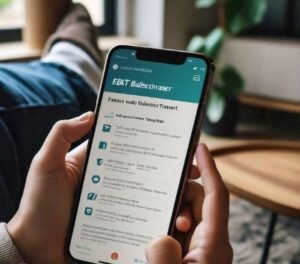For many Supplemental Nutrition Assistance Program (SNAP) recipients, the ability to transfer their EBT balance offers convenience and flexibility. However, when it comes to EBT balance transfer, many individuals have questions about how the process works, its benefits, and potential pitfalls. Is it truly a simple solution to managing your benefits, or are there hidden challenges that can complicate the process?
In this article, we will address the most common FAQs about EBT balance transfer, exploring both the advantages and limitations, to help you understand whether this option is right for you.

What is an EBT Balance Transfer?
Before diving into the FAQs about EBT balance transfer, it’s important to understand what the process entails. An EBT balance transfer allows SNAP recipients to move their benefits from one account to another, often due to a change in circumstances. For example, if you lose your EBT card or need to transfer your benefits to another state due to relocation, the balance transfer system can be used to make the transition smoother.
While the process sounds simple, it may not always be straightforward, and there are many factors that can affect how and when the transfer is completed.
FAQ #1: How Do I Transfer My EBT Balance?
One of the most common questions is, “How do I transfer my EBT balance?” The process typically involves contacting your state’s EBT customer service or visiting the official website for guidance. If you are moving to another state or need to change the address associated with your account, you will likely need to contact the SNAP office directly to initiate the EBT balance transfer.
In some states, you may be able to complete the transfer online or over the phone, but the specifics will vary depending on your state’s policies. This is one of the first steps in understanding EBT balance transfer—finding out how your state handles these transfers.
FAQ #2: Is an EBT Balance Transfer Free?
For many recipients, the question of cost is a major concern when considering EBT balance transfer. Generally speaking, EBT balance transfer is free of charge in most states. However, some states or situations may involve a small fee if the transfer process requires additional steps or if you are transferring funds between different types of accounts.
It’s always best to confirm with your state’s EBT office to ensure there are no unexpected fees associated with the EBT balance transfer process.
FAQ #3: Can I Transfer My EBT Balance Between Family Members?
Another common question is, “Can I transfer my EBT balance to a family member?” In most cases, the answer is no. EBT balance transfers are typically designed to be used by the recipient themselves or in cases of household relocations, not for transferring benefits to other people. Since SNAP benefits are intended for the household that the recipient is supporting, transferring your EBT balance to a family member is not typically allowed unless they are part of the same household or moving with you.
It’s crucial to understand the limitations when it comes to EBT balance transfer, as violating the rules can result in penalties or even the loss of benefits.

FAQ #4: Can I Transfer My EBT Balance to Another State?
If you’re relocating or moving to another state, you may be wondering, “Can I transfer my EBT balance to another state?” The process of transferring benefits to a new state is possible, but it depends on a few factors. When you move, you must contact the SNAP office in your new state to apply for benefits there. Once your eligibility is verified, your benefits will be issued by your new state, and any remaining balance from your old state will be transferred over.
However, it’s important to note that the EBT balance transfer process may take time, and you could experience a temporary delay before receiving your new benefits in the new state. Planning ahead can help you avoid any interruptions in food assistance.
FAQ #5: How Long Does an EBT Balance Transfer Take?
One of the most important concerns about EBT balance transfer is the time it takes to complete the process. Generally, an EBT balance transfer can take anywhere from a few days to a couple of weeks, depending on the complexity of the transfer and the policies of the state. For example, transferring benefits between states may take longer than transferring benefits within the same state.
If you’re facing urgent situations, such as a move or a lost card, you may be able to expedite the process by contacting customer service directly. However, in most cases, it’s important to be patient and plan accordingly when dealing with EBT balance transfer.
FAQ #6: Can I Transfer My EBT Balance to Pay for Non-Food Items?
A common misconception about EBT balance transfer is that it can be used to purchase non-food items or pay for services. EBT benefits are restricted to food purchases only, so it is not possible to use your balance for non-food items like toiletries, household supplies, or hot meals at restaurants unless the state participates in the Restaurant Meals Program (RMP), which is available in a few states.
When considering an EBT balance transfer, it’s important to remember that the transfer itself is only about moving food benefits from one account to another, and does not alter the types of goods that can be purchased with your EBT card.
FAQ #7: What Happens if There’s an Error During the EBT Balance Transfer?
Errors can happen during the EBT balance transfer process, and it’s important to be prepared for potential complications. If you notice an error or a discrepancy with your transferred balance, the first step is to contact the EBT customer service number for your state. They will assist you in resolving the issue and, if necessary, work with you to correct any problems or misunderstandings.
It’s also a good idea to keep track of your EBT transaction history during the balance transfer process, as this can provide useful documentation if you need to address any issues.
FAQ #8: Are There Any Restrictions on EBT Balance Transfers?
While EBT balance transfers are designed to be a flexible and convenient solution, some restrictions limit how and when they can be done. For example, transfers can only be made from one EBT account to another within a state or when moving to a new state. Additionally, transfers are often not allowed for non-SNAP participants or other individuals outside your household. Always check with your state’s SNAP office to understand any specific rules for EBT balance transfers.

Conclusion: Simple Solution or Hidden Challenges?
EBT balance transfer offers a convenient way to manage your benefits, especially when relocating or facing other challenges. However, as we have seen in the FAQs about EBT balance transfer, there are several limitations and potential complications to consider. Whether it’s time delays, eligibility restrictions, or the inability to transfer balances between family members, the process is not always as simple as it may seem.
Understanding the rules and being prepared for potential challenges can help you navigate the EBT balance transfer process with ease. By following the guidelines, contacting customer service for assistance, and planning, you can make the most of your EBT benefits and ensure a smoother transfer experience.




